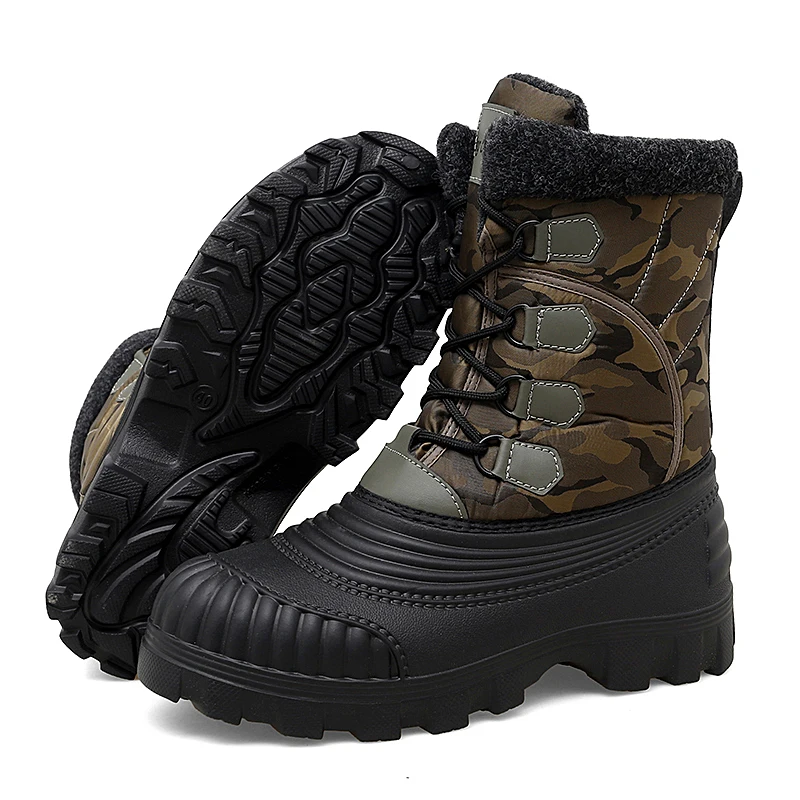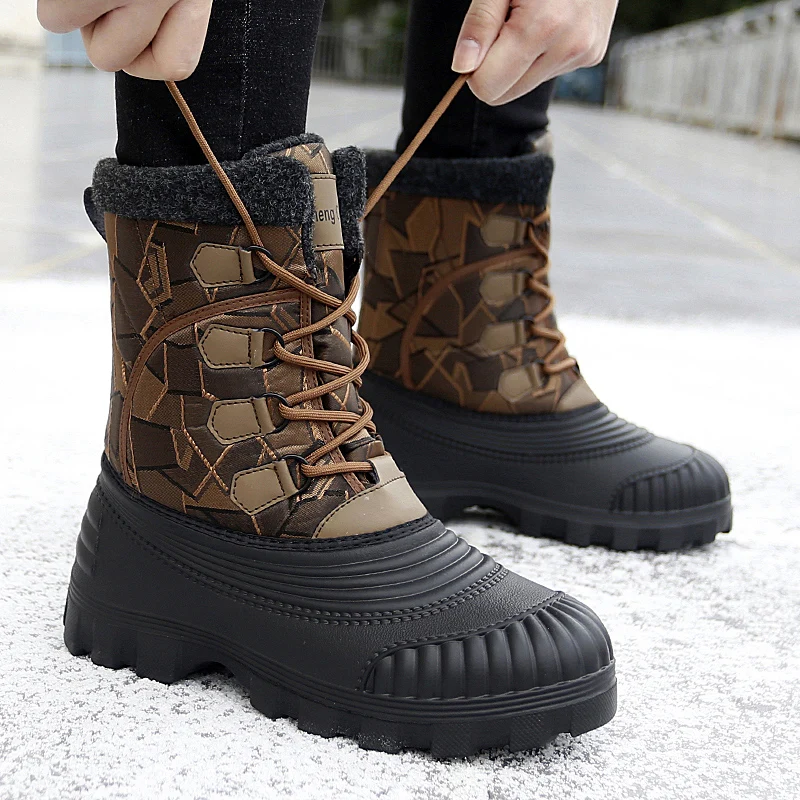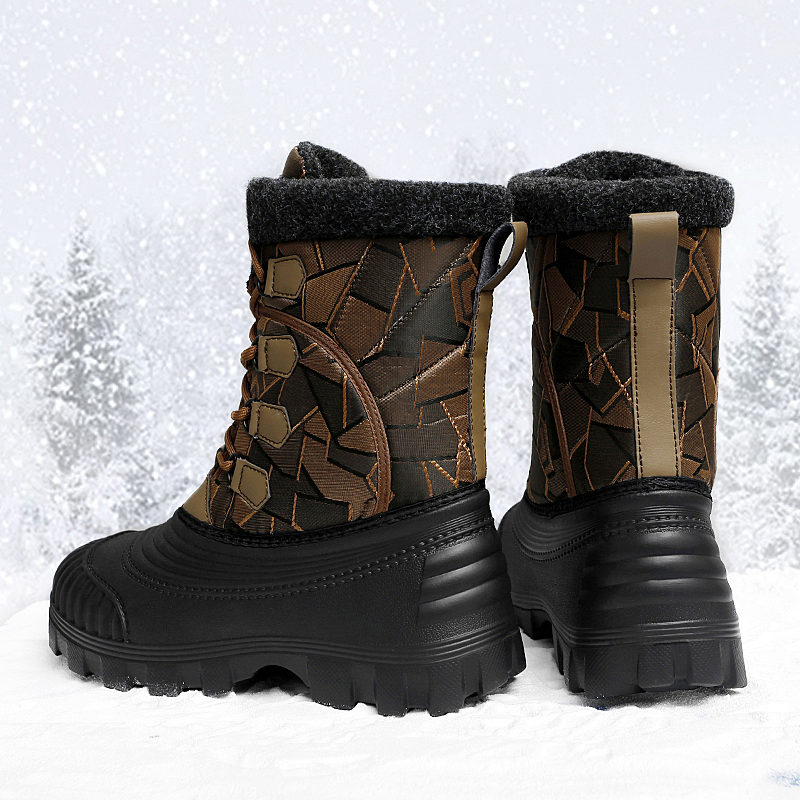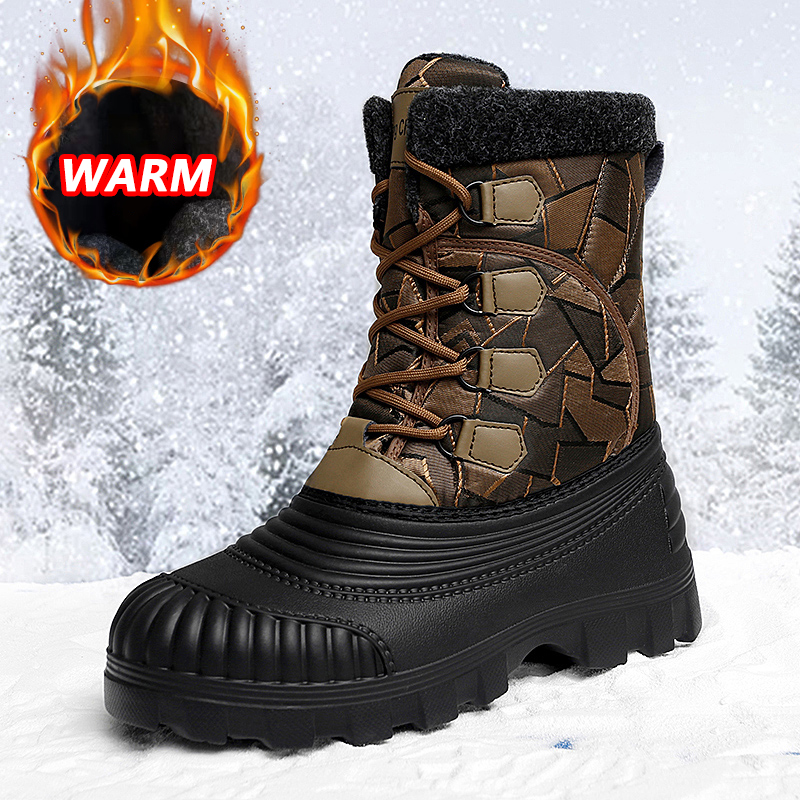Introduction: The Essential Role of Men’s Waterproof Work Boots
Mens waterproof work boots are an indispensable tool for individuals across various industries, offering unparalleled protection, support, and comfort in demanding work environments. Whether navigating construction sites, braving the elements in outdoor settings, or performing rigorous tasks in industrial facilities, the right pair of waterproof work boots can make all the difference in safety, productivity, and overall well-being. In this comprehensive guide, we’ll delve into the critical features, diverse styles, and practical considerations that define men’s waterproof work boots, empowering you to make informed decisions and elevate your work footwear to new levels of performance and reliability.

Understanding Men’s Waterproof Work Boots: Defining Quality and Functionality
Men’s waterproof work boots are engineered to withstand challenging conditions while providing optimal support and protection for the wearer’s feet. These boots are designed with durable, water-resistant materials and advanced construction techniques to keep moisture at bay, ensuring that the wearer remains dry and comfortable throughout their workday. Additionally, top-quality work boots prioritize features such as slip resistance, impact protection, and ergonomic design to address the unique demands of various work environments, making them a crucial component of occupational safety and performance.
Key Features of Men’s Waterproof Work Boots
When evaluating men’s waterproof work boots, several key features stand out as essential components that contribute to their overall functionality and effectiveness:

Water-Resistant Materials and Construction
High-quality men’s waterproof work boots utilize specialized materials and construction methods to create a barrier against moisture infiltration. Waterproof membranes, sealed seams, and hydrophobic treatments on the exterior surfaces ensure that the boots effectively repel water, keeping the wearer’s feet dry and comfortable in wet conditions.
Safety Toe Protection
Many waterproof work boots are equipped with safety toe caps, such as steel, composite, or alloy toes, providing crucial protection against impact and compression hazards in industrial and construction environments. These safety features are designed to meet industry standards and regulations, safeguarding the wearer from potential workplace injuries.
Slip-Resistant Outsoles
The outsoles of men’s waterproof work boots often feature aggressive tread patterns and slip-resistant compounds to enhance traction and stability on a variety of surfaces. Whether navigating slick floors, uneven terrain, or challenging outdoor environments, these slip-resistant outsoles help prevent slips, trips, and falls, promoting safety and confidence in every step.
Comfort and Support Features
Advanced cushioning, supportive midsoles, and ergonomic footbed designs are integral to ensuring comfort and reducing fatigue during long work shifts. Proper arch support, shock absorption, and moisture-wicking interiors contribute to the overall well-being of the wearer, enhancing their ability to perform tasks with ease and efficiency.
Electrical Hazard Protection
In certain work environments, electrical hazard protection is a critical consideration. Men’s waterproof work boots designed with electrical hazard (EH) ratings provide insulation against electrical currents, mitigating the risk of electric shock and enhancing safety in occupations where exposure to electrical hazards is a concern.

Diverse Styles and Applications of Men’s Waterproof Work Boots
Men’s waterproof work boots are available in a multitude of styles and configurations, each tailored to specific work environments and job requirements. From traditional lace-up designs to pull-on Wellington boots, there are numerous options to accommodate the preferences and needs of individuals working in diverse industries and roles.
Lace-Up Work Boots
Lace-up work boots offer a classic and customizable fit, allowing wearers to adjust the tightness of the boots for optimal support and comfort. These versatile boots are well-suited for construction, manufacturing, and other physically demanding occupations where secure ankle support and a personalized fit are essential.
Wellington Style Boots
Wellington-style work boots, characterized by their slip-on design and shaft heights that extend above the ankle, provide easy on-and-off convenience and ample coverage for protection against debris and moisture. These boots are favored in agricultural, farming, and outdoor work settings for their practicality and all-day comfort.
Hiking-Inspired Work Boots
Some men’s waterproof work boots draw inspiration from hiking footwear, featuring lightweight yet durable construction, enhanced traction, and outdoor-ready aesthetics. These rugged boots are ideal for individuals who transition between indoor and outdoor work environments, requiring versatility and performance in varying terrains and conditions.
Insulated and Cold-Weather Work Boots
In colder climates and winter work conditions, insulated waterproof work boots offer crucial warmth and protection against frigid temperatures. Thinsulate™, PrimaLoft®, or other proprietary insulation technologies provide thermal efficiency without adding excessive bulk, ensuring comfort and safety in cold and snowy environments.

Tactical and Military-Style Boots
For law enforcement, military, and security personnel, tactical work boots with waterproof properties offer a blend of durability, agility, and weather resistance. These specialized boots are engineered to withstand rigorous use, adverse weather, and demanding operational requirements, making them a reliable choice for professionals in the field.
Selecting Men’s Waterproof Work Boots: Practical Considerations and Fit Guidelines
Choosing the right pair of men’s waterproof work boots involves careful consideration of several practical factors, including fit, intended usage, and industry-specific requirements. By adhering to fit guidelines and understanding the specific demands of your work environment, you can ensure that your chosen work boots align with your needs and provide the necessary level of protection and comfort.
Fit Guidelines for Men’s Waterproof Work Boots
When selecting men’s waterproof work boots, it’s essential to prioritize fit to maximize comfort and performance. Consider the following fit guidelines to ensure an optimal footwear experience:
- Toe Room: There should be ample space in the toe box for natural movement and wiggle room without feeling cramped or constricted.
- Heel Support: The heel should remain securely positioned in the boot without excessive slippage or rubbing, providing stability and preventing blisters.
- Arch Support: Look for work boots with adequate arch support to promote proper foot alignment and reduce fatigue during extended wear.
- Sizing and Width Options: Many reputable brands offer a range of sizes and width options to accommodate different foot shapes and dimensions, allowing for a customized fit that enhances overall comfort and support.
Intended Usage and Environmental Factors
Consider the specific demands of your work environment when selecting men’s waterproof work boots. Factors such as temperature extremes, chemical exposure, terrain type, and potential hazards should influence your decision-making process to ensure that the chosen boots effectively address the challenges you encounter in your daily work activities.
- Chemical Resistance: In industries where exposure to chemicals or corrosive substances is a concern, selecting work boots with chemical-resistant properties is crucial for long-term durability and protection.
- Temperature Rating: For individuals working in extreme temperatures, whether hot or cold, choosing work boots with appropriate temperature ratings and insulation levels is essential for maintaining comfort and minimizing the risk of cold-related injuries or heat stress.
- Terrain Considerations: Those working in outdoor settings or rugged terrain should seek work boots with robust outsole designs, superior traction, and impact protection to navigate uneven surfaces and potential obstacles with confidence.
- Waterproof Performance: Assess the level of waterproof performance required based on the frequency and duration of exposure to moisture in your work environment, whether from rain, standing water, or other sources.
Industry-Specific Requirements and Compliance
Certain industries, such as construction, manufacturing, and utilities, have specific safety standards and regulations regarding footwear. It’s imperative to select men’s waterproof work boots that comply with relevant industry guidelines, such as OSHA (Occupational Safety and Health Administration) standards, to ensure that your footwear meets the necessary safety criteria for your occupation.
- Safety Toe Requirements: Determine whether safety toe protection, such as steel, composite, or alloy toes, is mandated in your industry, and select work boots that align with these requirements to safeguard against potential foot injuries.
- Electrical Hazard (EH) Ratings: If working in environments with electrical hazards, prioritize work boots with EH ratings to provide insulation against electrical currents and enhance overall safety.
- Slip Resistance Certifications: Look for work boots that hold certifications for slip resistance, such as those from ASTM International, to ensure that the boots meet established standards for traction on various surfaces.
- Chemical and Puncture Resistance: Depending on the nature of your work, consider work boots with additional features such as chemical resistance or puncture protection to address specific occupational hazards.
Maintaining and Extending the Lifespan of Men’s Waterproof Work Boots
Proper care and maintenance are vital for preserving the quality and longevity of men’s waterproof work boots, ensuring that they continue to deliver reliable performance and protection over time. By adhering to recommended care practices and proactive upkeep, you can maximize the lifespan of your work boots and optimize their functionality in demanding work environments.
Cleaning and Maintenance Strategies
Regular cleaning and maintenance routines play a significant role in preserving the condition and functionality of men’s waterproof work boots. Follow these strategies to keep your work boots in top shape:
Regular Cleaning
- After each use, remove dirt, mud, or debris from the boots’ exterior using a soft brush or damp cloth to prevent buildup and potential damage to the materials.
- For stubborn stains or soiling, utilize a specialized boot cleaner or mild soap solution, following manufacturer recommendations for application and drying.
Drying and Air Circulation
- Allow men’s waterproof work boots to air dry naturally after exposure to moisture or sweat, avoiding direct heat sources such as radiators or open flames, which can cause damage to the materials.
- To enhance airflow and prevent odors, remove the boot insoles and place them in a well-ventilated area, allowing them to fully dry before reinserting them into the boots.
Conditioning and Waterproofing Treatments
- Periodically apply waterproofing treatments or conditioning products specifically formulated for the materials used in your work boots, replenishing their water-repellent properties and maintaining suppleness.
- Focus on areas prone to flexing, creasing, and stitching to ensure comprehensive protection against moisture penetration and premature wear.

Storage and Environmental Considerations
Proper storage and environmental awareness are essential for preventing premature deterioration and maintaining the integrity of men’s waterproof work boots throughout their lifespan.
- Store work boots in a cool, dry location away from direct sunlight and extreme temperatures to prevent material degradation and color fading.
- Utilize boot trees or stuffing to maintain the shape and structure of the boots during storage, preventing creases and maintaining proper fit over time.
- Avoid prolonged exposure to harsh chemicals, solvents, or oils, as these substances can compromise the waterproofing and structural integrity of the boots.
Rejuvenation and Repair
When signs of wear, damage, or reduced waterproofing become apparent in men’s waterproof work boots, timely rejuvenation and repair measures can help prolong their usability and functionality.
- Consult professional cobblers or boot repair specialists for services such as sole replacement, seam repairs, or reconditioning to address significant wear and tear.
- If applicable, reapply waterproofing treatments or protective coatings to revitalize the boots’ water-resistant properties, ensuring ongoing protection against moisture.
- Address any minor scuffs, scratches, or abrasions promptly with suitable leather conditioners or repair products to prevent further damage and maintain the boots’ appearance.
Conclusion: Empowering Performance and Protection with Men’s Waterproof Work Boots
In conclusion, men’s waterproof work boots represent an essential investment in workplace safety, comfort, and performance, catering to the diverse needs of individuals across a wide spectrum of industries and work environments. By understanding the critical features, diverse styles, and practical considerations associated with men’s waterproof work boots, you can make well-informed decisions that elevate your footwear to new levels of durability, reliability, and wearer satisfaction.
